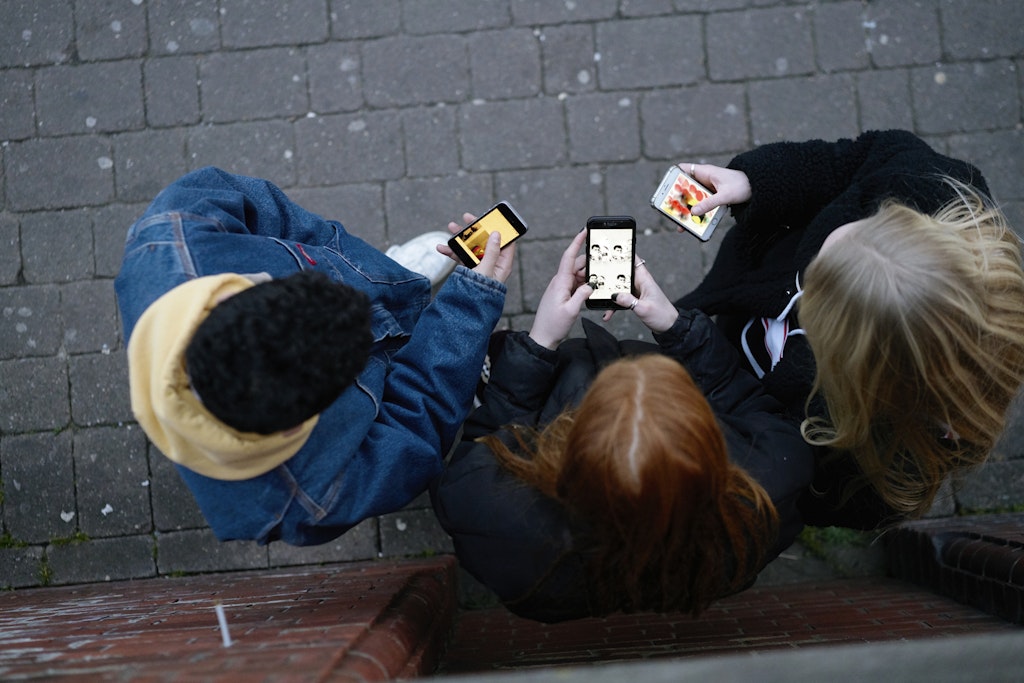Parents are being hypocritical about smartphones
Yes, kids use their phones too much, but what about adults?
When UsForThem launched its SafeScreens campaign in December 2022 calling for the supply of smartphones to kids to be restricted, the common retort was that smartphone use was already so ubiquitous amongst children the argument had been lost — that like toothpaste, once out of the tube it would be impossible to squeeze back in and we were mad even to try.
So, just over a year later, it’s wonderful to see that the need for state intervention to combat our youngsters’ smartphone and social media tech addiction has been embraced as a mainstream view. A majority of parents now say they would support a smartphone ban for kids, a few months ago a group of parents launched a self-help campaign which — in testament to the strength of parental feeling on the subject — quickly went viral. Daily, more and more commentators and citizens add their voice to the fray. Yet, as wonderful and welcome as that is, there’s still an elephant in the room.
For while state intervention is undoubtedly needed to solve what has become — in the words of Jonathan Haidt, author of The Anxious Generation — a “cohort problem”, state intervention will not be enough unless parents are prepared to change their own behaviour.
Evidence suggests that we are hopelessly addicted to our phones: one report suggests that the average adult touches their phone over 2,500 times a day. Walk into any restaurant, shop or bar — let alone a train, bus or tube — and you can expect to see hordes of adults, face down engrossed in their phones. If you read a book on a tube train you’ll be an eccentric outlier, and if you dare to take out an old fashioned notebook to do something as revolutionary as jot down notes with an actual pen, you will be met with suspicious looks and — as has happened to me more than once — smirks.
Compulsive smartphone use has become so normal we have become anaesthetised to the extremity of our addiction, but children are more perceptive. Taking my eldest (10) on a trip to London a couple of months ago, she was genuinely shocked by how many adults queuing on the Elizabeth line platform at Liverpool Street had their heads cranked 45 degrees down, fixated on their phones. There is nothing like a child’s unvarnished candour to hammer home the vapid nature of our digital dependency.
And yet this is only the visible manifestation of our societal addiction. As any addict can testify, worse is often what happens out of sight. How many parents among us can honestly say we haven’t spent a few extra minutes on the loo, scrolling through Instagram, Twitter or whichever other is our digital poison of choice, instead of helping our kids with their homework? How many of us haven’t lingered a while downstairs in the evening, catching up on WhatsApp messages, more instantly satisfying and intellectually stimulating than getting on with the light’s out routine? I surely cannot be alone in recognising how much my own smartphone habit eats into my family life yet data suggests many of us resist coming clean to ourselves about this.
We have normalised a completely abnormal environment for ourselves and our kids
In finding that 46 percent of teens feel ignored by parents distracted by their phones, one comprehensive survey also revealed that parents painted an unjustified rosier picture of their own behaviour — only 31 percent acknowledged becoming regularly distracted. Those of us who point to smartphone and social media use amongst adolescents as a causal factor in the surging decline in child mental health need to be careful not to gloss over the possibility that our own behaviour is also at least in part to blame. A raft of studies suggest that excess parental smartphone use not only makes children unhappy but is linked to a host of other mental health issues in children.
We have normalised a completely abnormal environment for ourselves and our kids, where instead of seeing phones as an intermittent technological resource, they have become our constant crutch. Without any sensible boundaries or limitations on our own behaviour it’s no surprise that so many children are now displaying similar signs of smartphone addiction. The 91 percent of 11 year olds who, according to Ofcom, now own a smartphone spend on average close to a whopping four hours a day on their device, and according to one recent KCL study one in four kids now use their phone in a way that is consistent with a behavioural addiction: monkey see, monkey do, after all.
It is no surprise to see studies evidencing a strong correlation between parental smartphone habits and those of their children. “If parents frequently check and compulsively use smartphones at home, their children adopt and imitate their behaviours”, notes one.
Addicts are often told that to break an addictive cycle they must remove themselves from the proximity of dangerous trigger points and people. But smartphones are so enmeshed in the daily fabric of our lives and friendships, this is almost impossible to do in practice. Sure, I could have left my phone behind when I went on a family holiday last week, but such is my modern life’s tech-dependency that without it I would have been hamstrung in ways that feel uncomfortable, especially abroad and with kids in tow: no GPRS to navigate around the towns we were visiting, no way to access bank accounts in an emergency, no option to call Ubers, to see bus timetables, perhaps even to order food in restaurants. Whilst brick phones are seeing a limited renaissance the cohort problem is as much a blocker to widespread societal correction for adults as for kids: with 97 percent of 25 — 54 year olds owning a smartphone, a brick phone will allow me to make calls and send texts but it will still see me shut out of the vast majority of my friendship and social groups.
That has led to talk recently of the need for phone and tech companies to produce a product that is safer and more suitable for children — something with GPRS and limited, non-addictive app functionality, slightly “smarter” than a brick phone, but stripped of social media and addictive-by-design features — so still much “dumber” than a smartphone.
I, for one, would rush to buy such a product for myself, let alone for my kids when the time comes — for the reality is that we cannot hope to help our kids unless and until we help ourselves.
Enjoying The Critic online? It's even better in print
Try five issues of Britain’s newest magazine for £10
Subscribe














